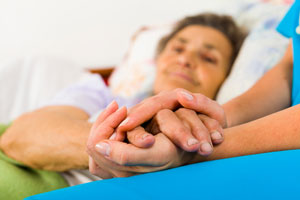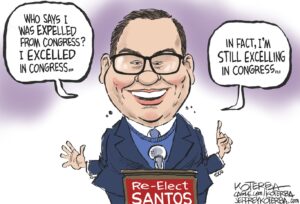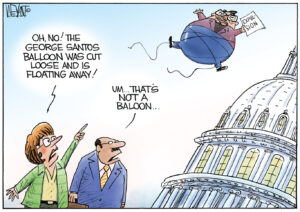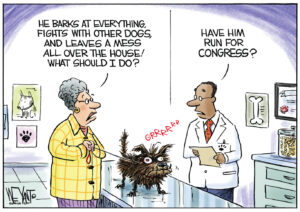Help the Helpers
This is a story of the poor versus the poor, a metaphor for income inequality in 21st century America.
This is a story of the poor versus the poor, a metaphor for income inequality in 21st century America.
It concerns the nation’s 2 million miserably underpaid home care workers, who are pitted against those who must pay them: the elderly, disabled people and working parents.
The story has been pretty much ignored amid so many better-known examples of the economy’s unfairness.
Those needing care constitute a relatively small and powerless slice of the population. For example, in a nation of 313 million, the disabled elderly number less than 10 million. Their almost 2 million working poor caretakers are also powerless. Most are women who are Latino, African-American or from other ethnic minorities. Almost a third are immigrants and a substantial number of these are undocumented, in fear of deportation.
Home care work is difficult. Nannies raise their employers’ children and then go home and raise their own. Domestic aid workers care for the physically and mentally impaired, young and old, who want to remain at home rather than live in a care facility. They bathe, dress and groom their clients, take them to the toilet, shop, organize their lives, provide companionship and some may even give medication and change dressings.
For this, they are paid about $20,000 a year, less than $10 an hour, just about the poverty level for a family of three. And the health aides, most of whom have no health insurance, risk work-related injury. “Work as an aide can be physically and emotionally demanding,” warns the U.S. Labor Department. “Aides must guard against back injury because they may have to move clients in and out of bed or help them stand or walk.” And some clients have “difficult or violent behavior.”
The UCLA Institute for Research on Labor and Employment reported in 2010 that in Los Angeles County, nearly 75 percent of child care workers were paid below the minimum wage; 96 percent of home care and child care workers experienced overtime violations, and large numbers said meal breaks were cut short, interrupted or nonexistent.
What’s striking is that those receiving care are often as bad off as the caregivers.
The poorest among the sick receive assistance from Medicaid, the federal program of insurance for the poor. The level of care ranges from California’s unlimited number of home care visits to just two visits a week in many other states. But the recession and budget-cutting governors and legislators have prompted states to kick many off the program.
Those not eligible for Medicaid live on their own limited incomes. The Center for Personal Assistance Services at UC San Francisco found that almost 20 percent of individuals who receive such care have incomes less than the federal poverty level, which is $11,490 a year. The annual income of almost 30 percent is $11,490 to $22,980. Seventeen percent reported incomes of $22,981 to $34,470, with the rest earning above that figure. That’s far below the national household median income of $51,017 a year. Out of pocket medical expenses are four times as great for the disabled elderly as for the non-disabled, one study found.
“The people who use these services have more in common with the people providing these services than they do say with some wealthy person,” said Deborah Doctor of Disability Rights California, which advocates for disabled people. “It pits poor people against poor people.”
That conflict has been evident in Washington and state capitals in the past few years in efforts to pass proposals that require disabled employers to pay their home care aides time-and-a-half for overtime hours. These workers had long been exempted from such a rule.
After much lobbying and community organizing, domestic worker organizations persuaded the Obama administration to issue regulations requiring home workers be paid overtime and a minimum wage beginning next year. In California, a new law will go into effect Jan. 1 requiring time-and-a-half overtime pay for those working more than nine hours a day or 45 hours a week. Organizations employing home health workers opposed the law and federal regulations.
This is clearly a case for federal government intervention. And much can be done. The Affordable Care Act — Obamacare — should be expanded to include the elderly disabled, and the federal government should subsidize child care. Home health care is the nation’s fastest growing occupation, and child care is expanding too. By 2044, federal forecasters estimate there will be 17.2 million elderly disabled, including the severely disabled, such as those with Alzheimer’s. The number of workers caring for them is expected to rise by more than a million to 3.2 million by 2020. And by that year, it’s estimated there will be more than 1.5 million child care workers.
If the federal government increased financial support for those employing these workers, both employees and employers would be helped financially and emotionally. Workers’ wages would increase and the economy would benefit from a permanent boost in spendable income.
As Deborah Weinstein, executive director of the Coalition on Human Needs, wrote in The Huffington Post earlier this year, “Clearly, most families and individuals cannot afford just compensation for caregivers on their own. It is time to commit to increase public funding and stronger labor protections for the care giving role. Just as we recognized early in our nation’s history that educating our children is a shared responsibility, we must now recognize that care giving at all stages of the life cycle is a public value worthy of government support.”
Right now, this is too much to ask of a Congress held hostage by the right wing. It won’t even extend benefits to the long-term unemployed. But perhaps as the infirmities and expenses of old age begin to creep up on an increasing number of politicians and their relatives, self-interest will make this a national priority.
Until then, it will be the poor against the poor, while an indifferent government looks away.
Your support matters…Independent journalism is under threat and overshadowed by heavily funded mainstream media.
You can help level the playing field. Become a member.
Your tax-deductible contribution keeps us digging beneath the headlines to give you thought-provoking, investigative reporting and analysis that unearths what's really happening- without compromise.
Give today to support our courageous, independent journalists.






You need to be a supporter to comment.
There are currently no responses to this article.
Be the first to respond.